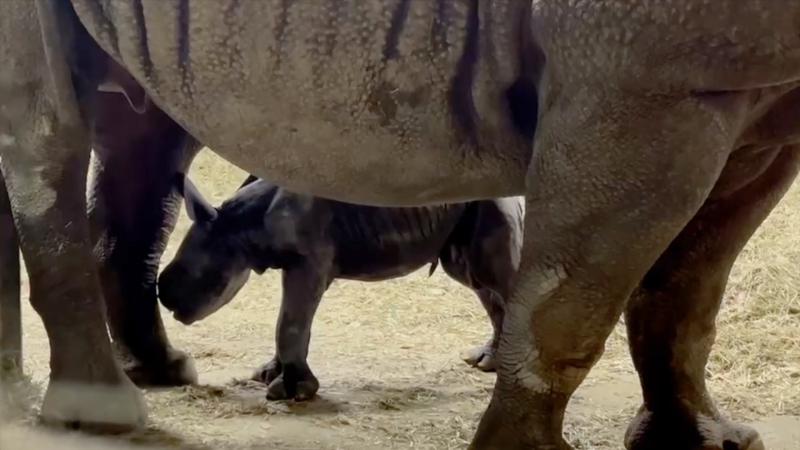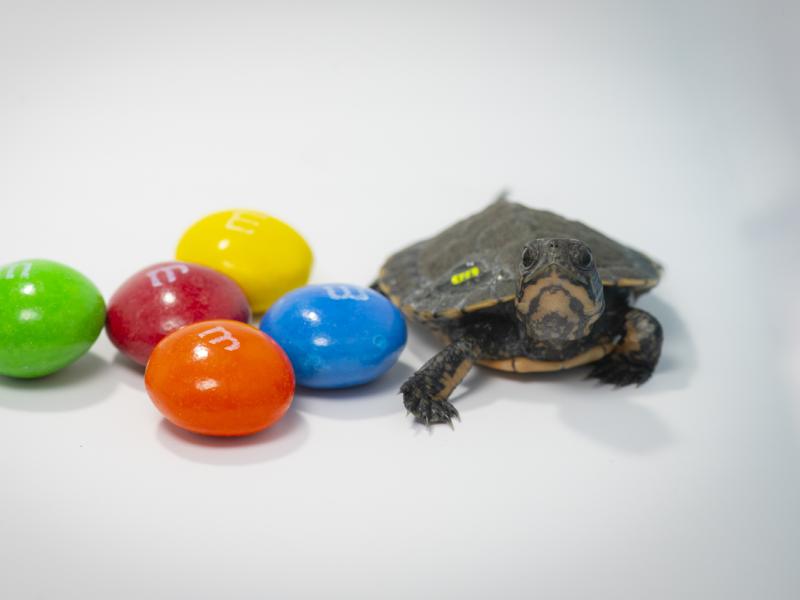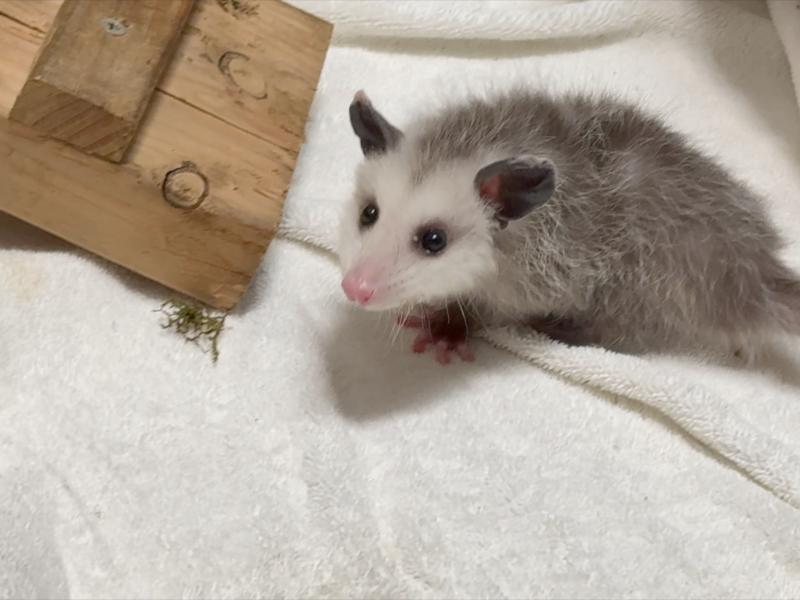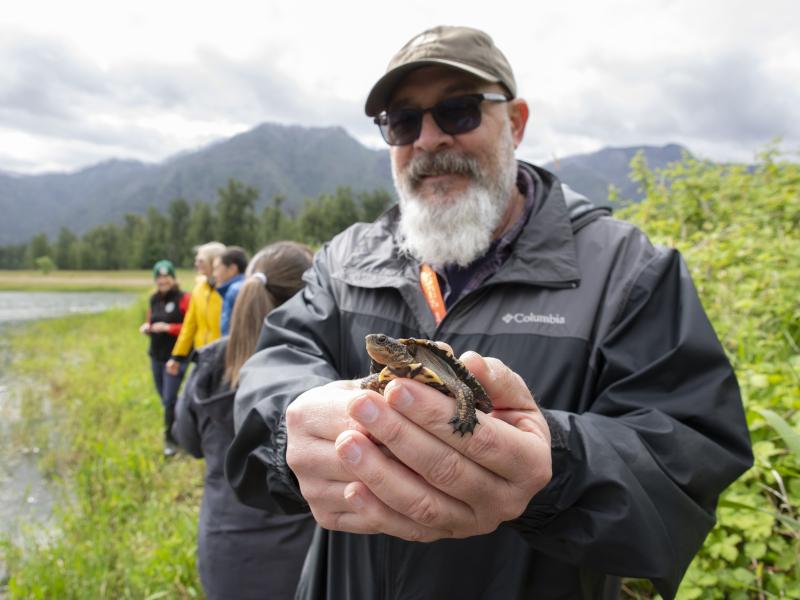Hello, baby! Zoo welcomes new rhinoceros calf

Eastern black rhino Jozi and her new baby are doing well, zoo caregivers say
The Oregon Zoo’s rhinoceros family grew by about 100 pounds on Monday night as 11-year-old eastern black rhino Jozi gave birth to a baby, adding to the world population of this critically endangered species.
Caregivers said the newborn entered the world on Dec. 4 at around 9:30 p.m. The first-time mom and her new arrival are doing well in their behind-the-scenes maternity den.
“Everyone is really excited about it,” said Chad Harmon, who supervises the zoo’s rhino area. “The most satisfying thing for me is to see Jozi taking such great care of her baby. These first few days are especially critical, so we’re being very cautious and giving them as much quiet time as possible.”
Jozi and her baby are off-view to allow the new family a comfortable place to bond. Animal-care staff have taken a hands-off approach, but are closely monitoring the pair to make sure everything continues to go well. Since the calf is already nursing well, veterinary staff will not be doing an immediate veterinary check. Care staff have not yet determined the sex of the new baby.
“Our care staff and veterinary team have prepared for this day, giving Jozi everything she needed for a successful birth,” Harmon said. “They’re ready to help if needed, but thankfully, Jozi’s doing a great job all by herself so far.”
Rhino babies typically weigh around 100 pounds at birth, but guests will have to wait until the baby’s a little bigger — and until the weather’s warmer — before they begin exploring Rhino Ridge.
Harmon, a longtime rhino benefactor, is a board member of the International Rhino Keeper Association, which works to develop and share best practices for caregivers and contribute to rhino conservation.
Jozi’s baby holds much significance for the species, according Kelly Gomez, who oversees the zoo’s Africa area. Jozi and her companion, King, belong to the eastern subspecies of black rhinoceros, which is considered critically endangered. In 2011, the western subspecies of black rhino was declared extinct.
“These rhinos represent a species that’s among the most endangered on the planet,” Gomez said. “Poaching and the illegal wildlife trade have wiped out 96% of the world’s black rhino population. In South Africa alone, we’re losing almost a rhino a day. Hopefully, their story can help inspire a new chapter in the conservation of this incredible species.”
“We’ve gone from half a million to a few thousand rhinos left in the blink of an eye,” noted U.K. naturalist Steve Backshall. “While those left in the wild are ludicrously precious, the rhinos that are in zoos (which were bred there, born there and cannot ever be released into the wild) are of disproportionate importance to their kind.”
Jozi, who weighs around 2,400 pounds, was born Sept. 8, 2012, at the Pittsburgh Zoo. Keepers named her after her parents: “Jo-” from her father, Jomo, and “-zi” from her mother, Azizi.
Jozi moved to the Oregon Zoo in 2021 from to the Milwaukee County Zoo, joining male rhino King, the baby’s father, who arrived from Chicago’s Brookfield Zoo earlier that year. The moves were based on a recommendation from the Association of Zoos and Aquariums’ Species Survival Plan for rhinos. The AZA has established Species Survival Plans for many threatened or endangered species — cooperative programs that help create genetically diverse, self-sustaining populations to guarantee the long-term future of these animals.
More News

Tiny Endangered Turtle Hatchlings Arrive At Zoo
Seventeen northwestern pond turtle hatchlings, each about the size of a walnut, are making themshellves at home at the Oregon Zoo this summer.June 4, 2025

Awesome opossum! Orphaned baby finds new home at zoo
A tiny opossum found wandering earlier this month has made his way to a new home at the Oregon Zoo.May 28, 2025

Zoo, partners return 19 endangered turtles to wild
Zoo-reared northwestern pond turtles are released in the Columbia River Gorge It was a shell-ebration last week for 19 northwestern pond turtles reared at the Oregon Zoo. In addition to partners from the Washington Department of Fish & Wildlife and U
May 19, 2025

